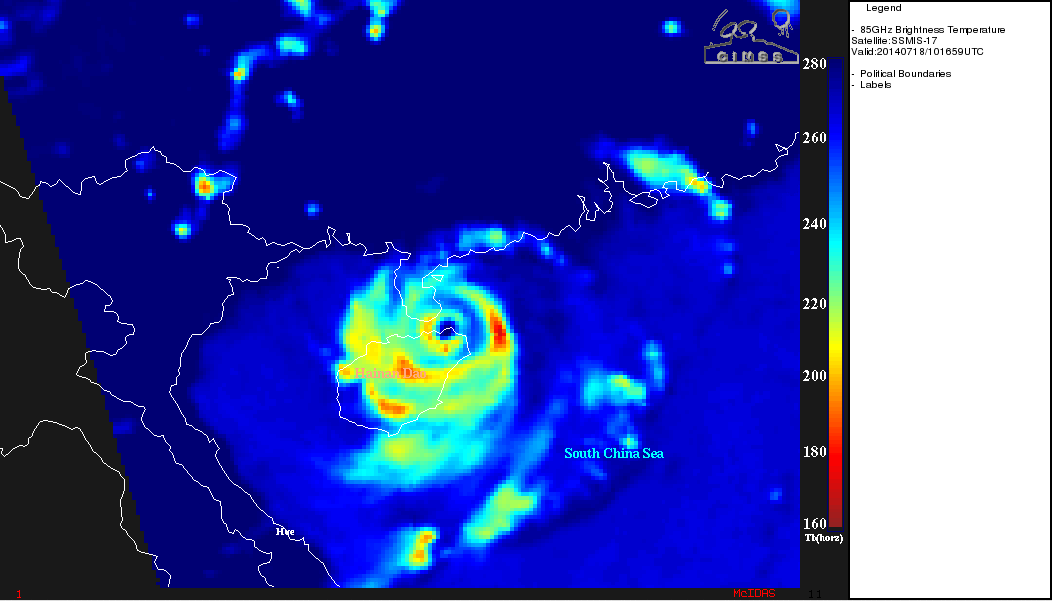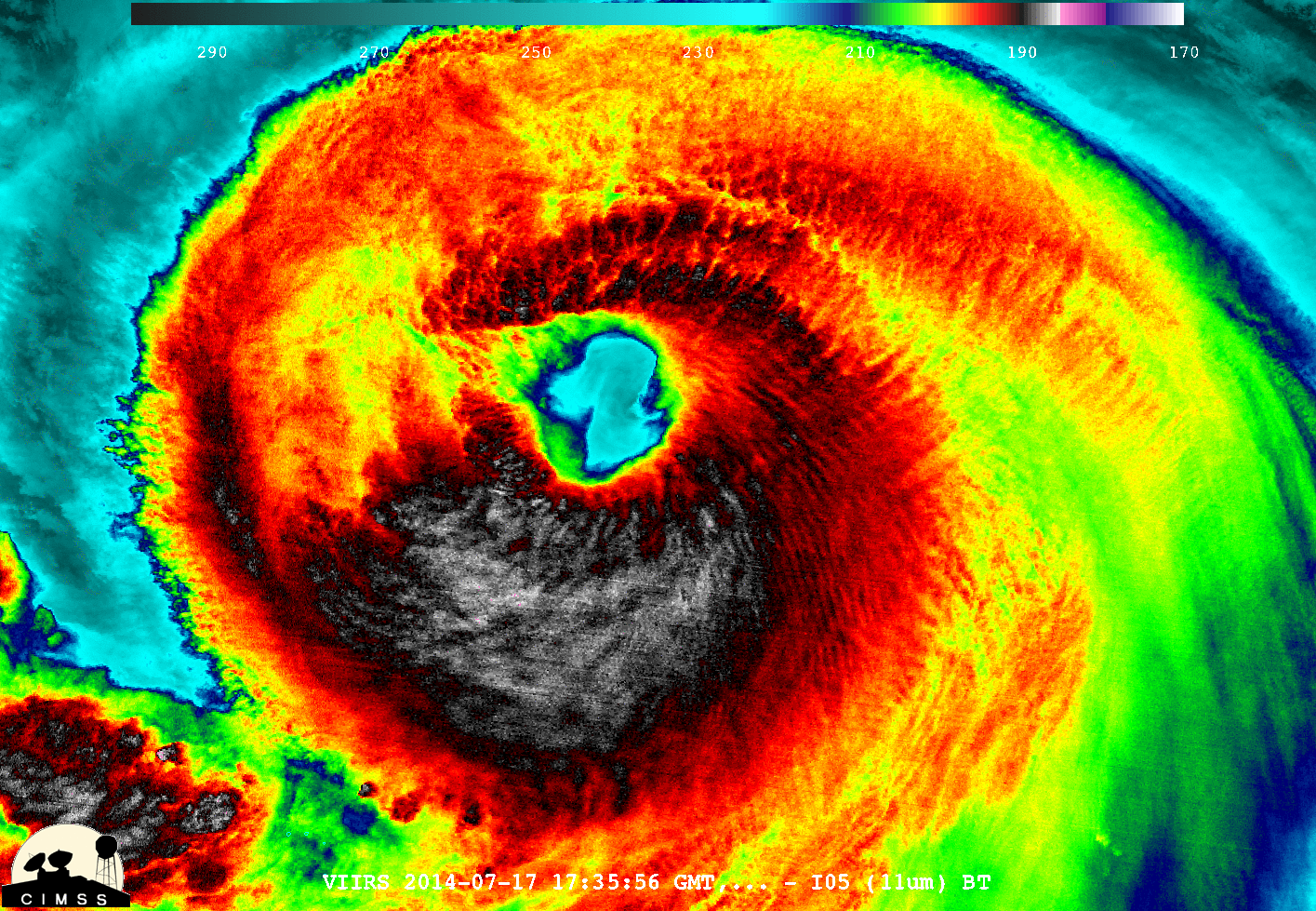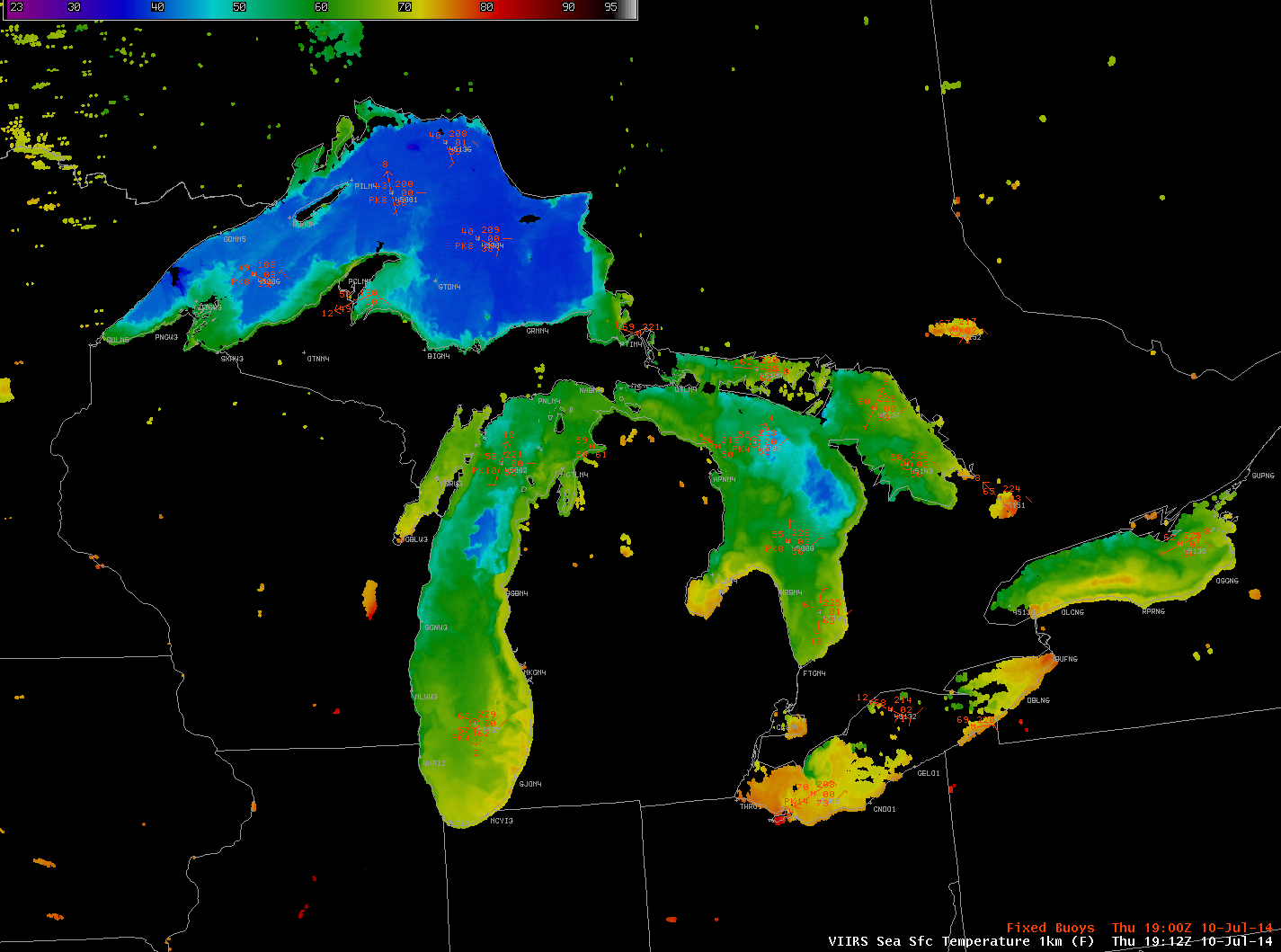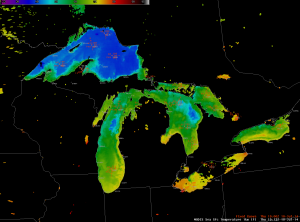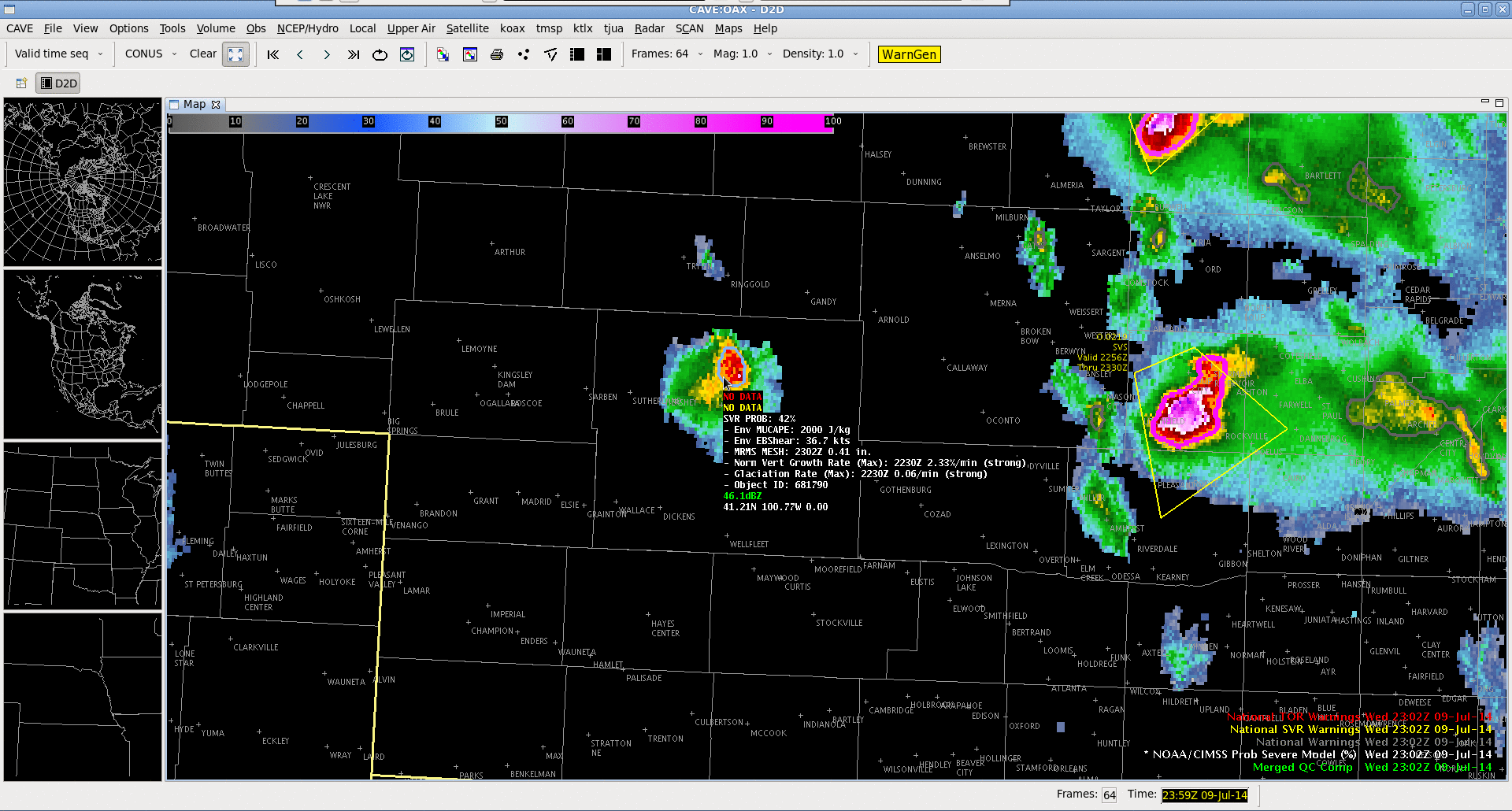![GOES-13 0.63 µm visible (upper left), 3.9 µm shortwave IR (upper right), 10.7 µm IR (lower left), and 6.5 µm water vapor (lower right) images [click to play animation]](https://cimss.ssec.wisc.edu/satellite-blog/wp-content/uploads/sites/5/2014/07/Reg_3.9u_Sat_20140718_1300.png)
GOES-13 0.63 µm visible (upper left), 3.9 µm shortwave IR (upper right), 10.7 µm IR (lower left), and 6.5 µm water vapor (lower right) images [click to play animation]
A comparison of CLAVR-x POES AVHRR Cloud Type, Cloud Top Height (CTH), and Cloud Top Temperature (CTT) products at 09:32 UTC or 4:32 am Central time (above) showed patches of water droplet clouds with CTH values in the 3-4 km range and CTT values in the 0º C to -4º C range.
A similar comparison at 12:05 UTC or 7:05 am Central time (below) revealed two areas of “cirrus” cloud type (orange color enhancement) exhibiting CTT values in the -35º to -40º C range (darker blue color enhancement) along the northern and southern periphery of the forming hole punch cloud.
These ranges of AVHRR Cloud Top Temperature and Cloud Top Height values agreed well with the regional rawinsonde data from Davenport IA (KDVN), Minneapolis MN (KMPX) and Green Bay WI (KGRB) shown below.
Terra MODIS visible and Cloud Phase products at 17:07 UTC or 12:07 pm Central time (below) indicated that a large area of glaciated ice cloud (salmon color enhancement) existed in the center portion of the hole punch cloud feature.
The cause of this large hole punch or fall streak cloud feature — and the other similar but smaller features seen across the region — was likely aircraft that had either ascended or descended through the cloud layer; particles in the aircraft exhaust acted as ice condensation nuclei, causing the process of cloud glaciation to begin.
GOES-15 imagery (above) shows the Hole Punch cloud from an oblique angle, and highlights how the region was overrun by smoke from wildfires in Canada. Smoke is most easily seen in visible satellite imagery when the sun is low in the sky, allowing for forward scatter. The smoke becomes less apparent in the imagery as the Sun rises. A similar animation for GOES-13 is below. Smoke is not quite so evident in this image because there is less forward scatter to GOES-13 over 75º W. Animations from both satellites show a hole punch cloud in Iowa as well.View only this post Read Less


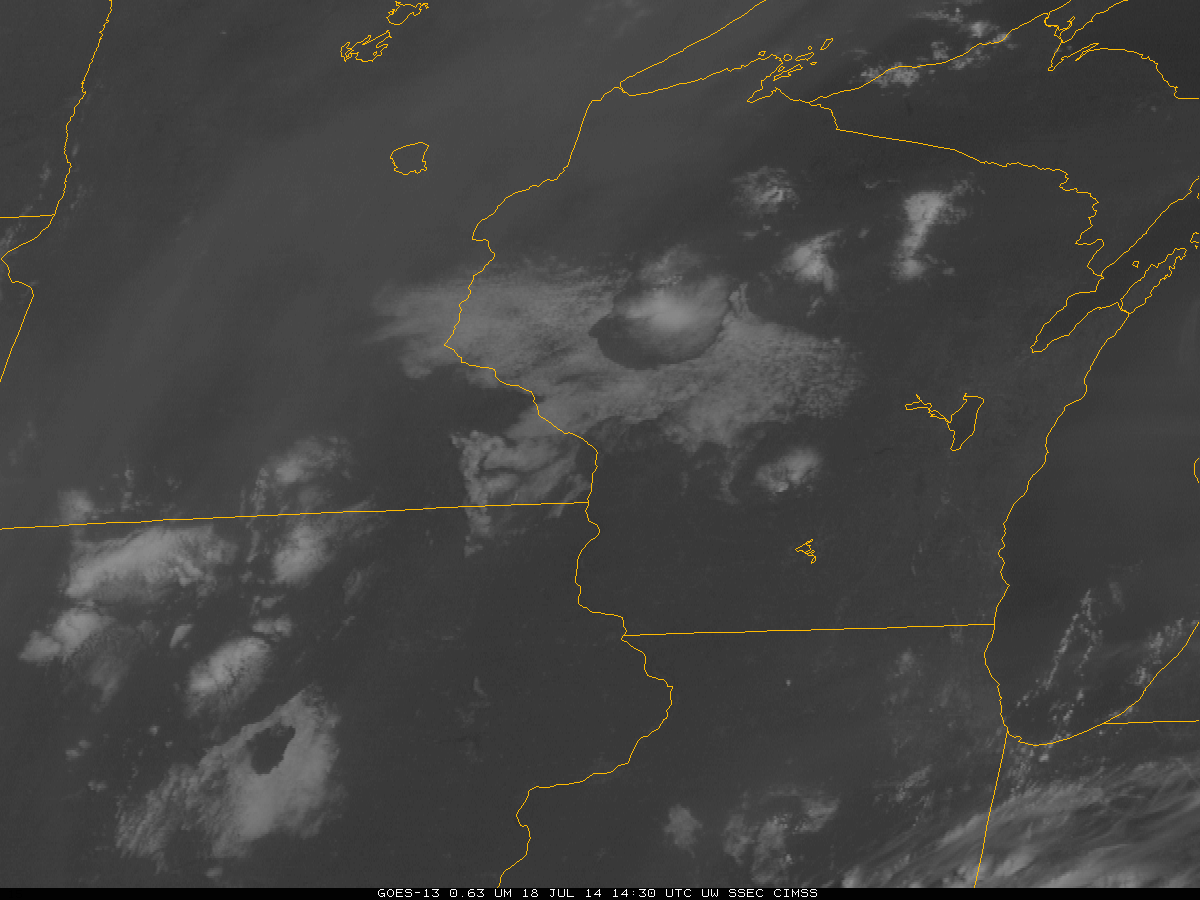
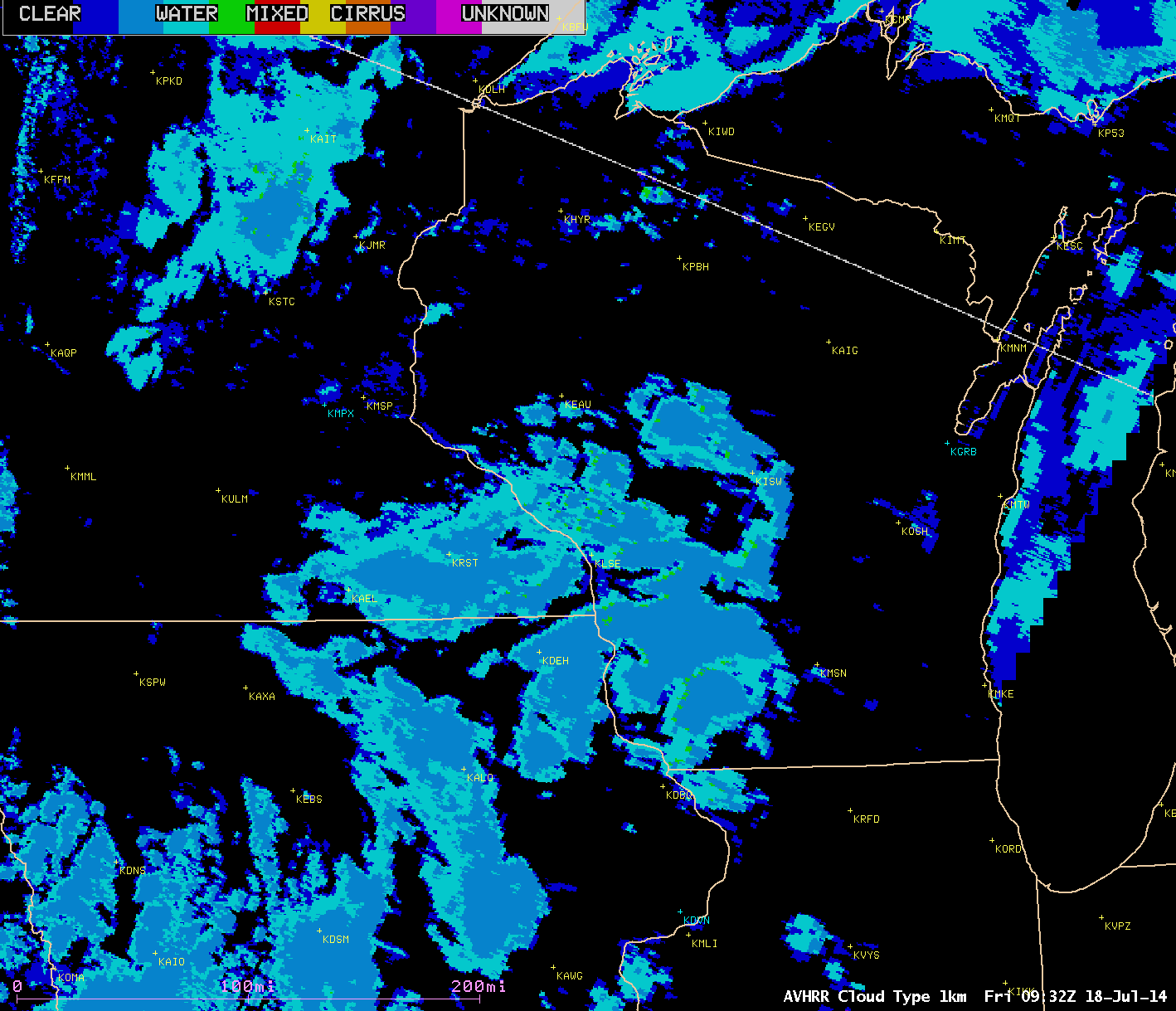

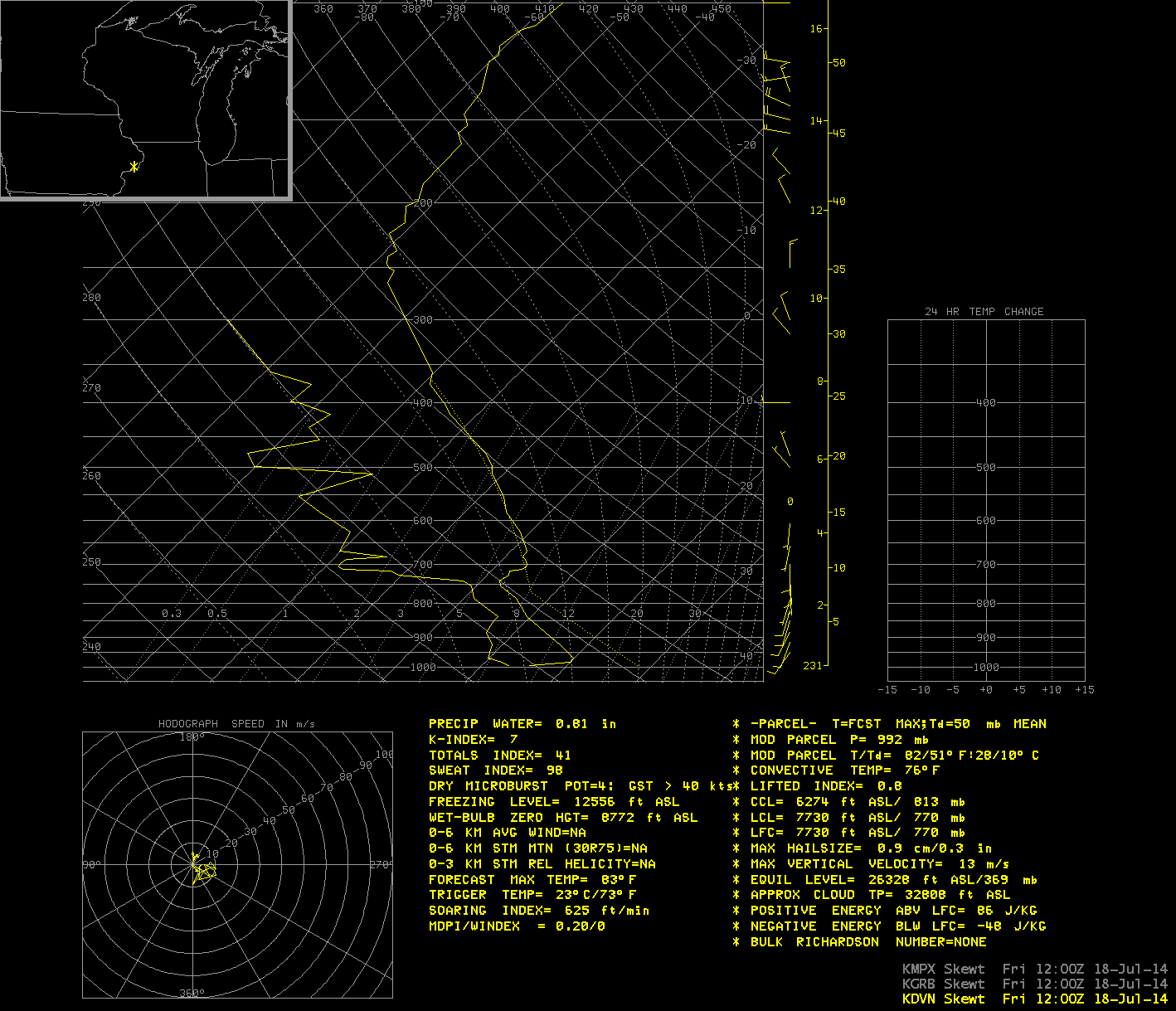
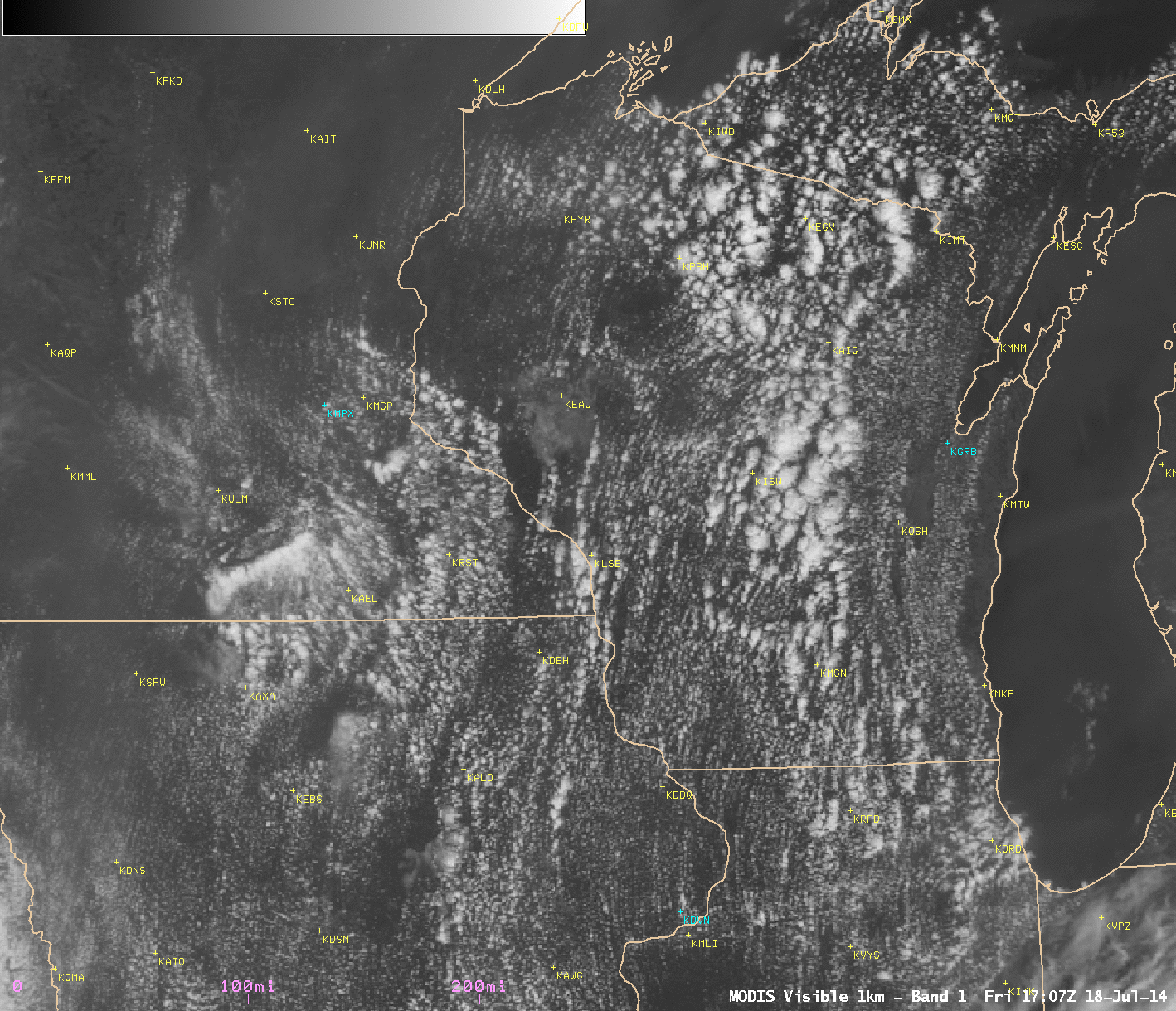
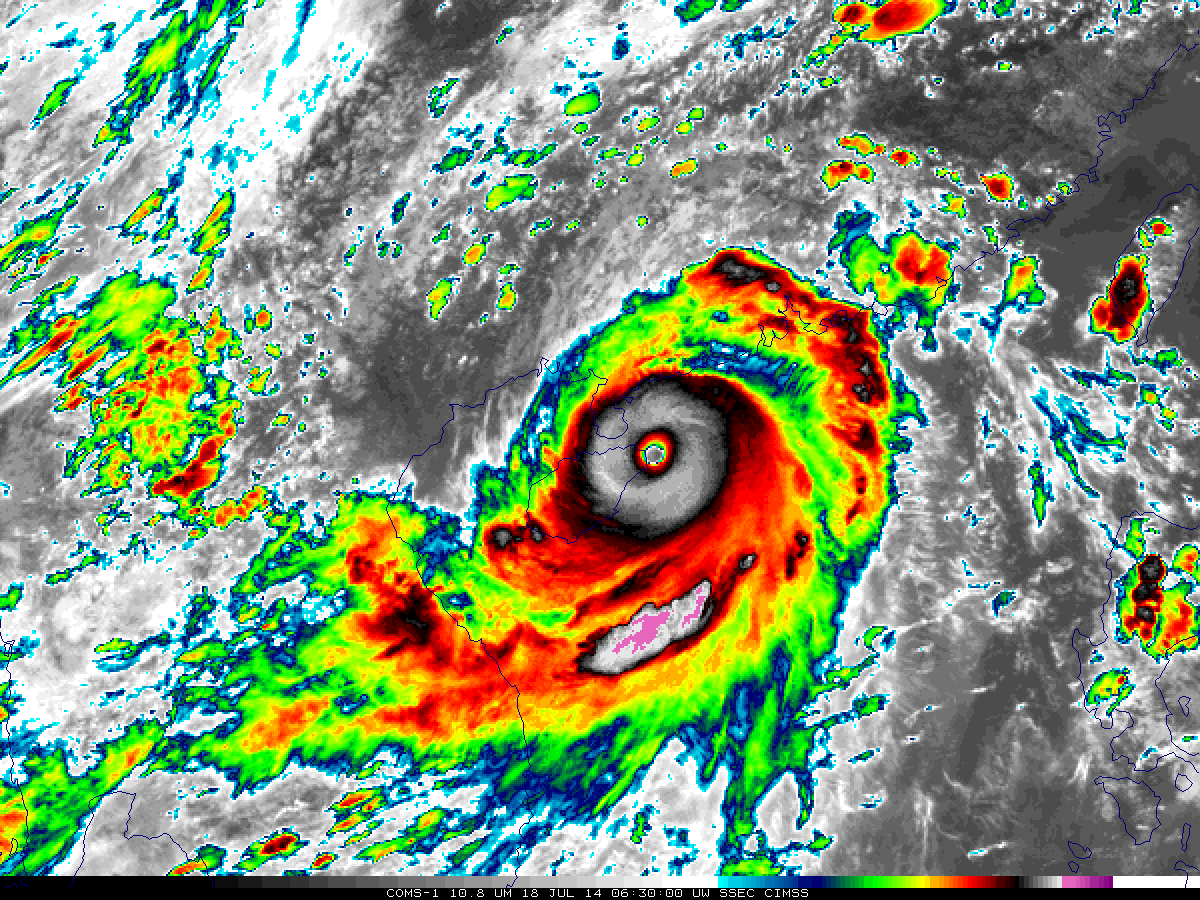
![COMS-1 10.8 µm infrared channel images [click to play animation]](https://cimss.ssec.wisc.edu/satellite-blog/wp-content/uploads/sites/5/2014/07/COMS1_IR_18July2014_0630.gif)
![Past and Projected path of Rammasun, with Sea Surface Temperatures [click to enlarge]](https://cimss.ssec.wisc.edu/satellite-blog/wp-content/uploads/sites/5/2014/07/Path_RAMMASUN.gif)
![COMS-1 0.675 µm infrared channel images [click to play animation]](https://cimss.ssec.wisc.edu/satellite-blog/wp-content/uploads/sites/5/2014/07/COMS1_VIS_18July2014_0630.gif)
